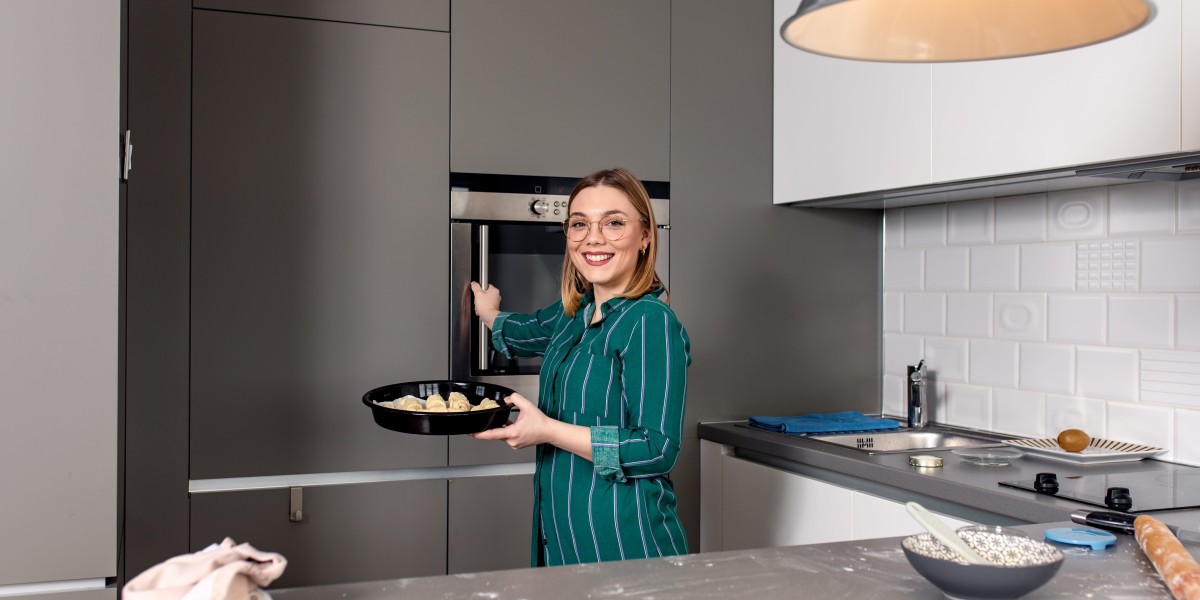In recent years, integrated ovens have become a staple in contemporary kitchen design, appealing to homeowners and professional chefs alike. Combining functionality with aesthetic appeal, these appliances are crafted to blend seamlessly with cabinetry while offering advanced cooking capabilities. This article explores the various types of integrated ovens, their advantages, installation considerations, and frequently asked questions to help consumers make informed choices.
What Are Integrated Ovens?
Integrated ovens are designed to fit within kitchen cabinetry, creating a streamlined look that enhances the overall design of the kitchen. Unlike standalone models, which protrude from cabinets, integrated ovens can be placed at eye level or below counter height, promoting ease of use while maximizing space.
Types of Integrated Ovens
Integrated ovens come in various forms, each with unique features and specialties. Here are the most common types:
Single Ovens
These are typically the most popular choice among homeowners. Single integrated ovens combine convection and traditional heating methods, suitable for most cooking needs, from baking to roasting.Double Ovens
Ideal for larger families or those who frequently entertain, double ovens provide two separate cooking compartments, allowing multitasking for different dishes at varying temperatures.Steam Ovens
These modern integrated ovens utilize steam to cook food, preserving nutrients and flavor while ensuring moist results. They are often used in conjunction with traditional ovens to provide versatility.Wall Ovens
Wall ovens save floor space and can be installed at eye level, making it easier to monitor cooking without the need to bend down.Combination Ovens
These versatile units combine the functions of a microwave and a conventional oven, enabling a variety of cooking methods, including baking, roasting, and reheating.
Advantages of Integrated Ovens
The integration of ovens into kitchen designs presents several advantages that can enhance both functionality and aesthetics:
Space-saving Design
- Maximized Kitchen Space: Integrated ovens free up valuable floor space, especially beneficial in smaller kitchens.
Enhanced Aesthetics
- Seamless Appearance: The ability to integrate ovens into cabinetry fosters a clean, streamlined look that can elevate the overall kitchen design.
Greater Functionality
- Versatile Cooking Options: With features like smart technology, multiple cooking settings, and energy efficiency, integrated ovens cater to diverse culinary needs.
Organization
- Built-in Storage: Many integrated ovens come with additional built-in shelving or storage options, making it easier to keep kitchen essentials within reach.
Energy Efficiency
- Reduced Energy Usage: Modern integrated ovens often incorporate energy-efficient technologies, reducing electricity bills while being environmentally friendly.
Installation Considerations
When considering an integrated oven, there are essential factors to keep in mind regarding installation:
Space Planning
- Dimensions: Accurate measurements of the available space are crucial to ensure an appropriate fit.
- Ventilation: Adequate ventilation must be ensured, particularly for models that release steam or smoke during use.
Power Source
- Electrical Requirements: Determine the necessary electrical supply and ascertain if upgrades are needed for the oven to function safely.
Professional Installation
- Hiring an Expert: Engaging a qualified technician ensures proper installation and adherence to safety standards, maximizing the oven's lifespan.
Table: Comparison of Integrated Oven Types
| Type | Best For | Key Features | Average Price Range |
|---|---|---|---|
| Single Oven | Small families | Compact size, budget-friendly | £700 - £2,000 |
| Double Oven | Large households | Two cooking cavities, increased cooking capacity | £1,200 - £3,000 |
| Steam Oven | Health-conscious cooks | Steam cooking, nutrient preservation | £1,500 - £3,500 |
| Wall Oven | Space-challenged kitchens | Elevated cooking position, sleek design | £1,000 - £4,000 |
| Combination Oven | Versatile cooks | Microwave plus conventional oven capabilities | £1,200 - £2,800 |
Frequently Asked Questions
What is the difference between an integrated oven and a conventional oven?
Integrated ovens are designed to meld seamlessly with kitchen cabinetry, offering a more cohesive and streamlined aesthetic. Conventional ovens tend to be freestanding and may not fit as neatly within cabinetry.
Can I install an integrated oven on my own?
While some homeowners may feel comfortable with DIY installations, it is recommended to hire a professional to ensure safety and compliance with electrical codes.
Are integrated ovens more expensive than traditional ovens?
The initial cost of integrated ovens can be higher due to their specialized design and features. However, ovensandhobs.uk the energy efficiency and durability of these appliances can lead to savings over time.
Do integrated ovens require special maintenance?
Integrated ovens typically require the same maintenance as conventional ovens, such as regular cleaning, checking seals, and ensuring proper function. However, built-in models may have unique components that require attention.

What features should I look for in an integrated oven?
When choosing an integrated oven, consider the following features:
- Cooking Modes: Look for options like convection, steam, and broil.
- Smart Technology: Wi-Fi connectivity can enhance control and monitoring capabilities.
- Self-Cleaning Options: Simplifies maintenance.
- Temperature Probes: For precision cooking.
Integrated ovens offer a harmonious blend of functionality and design, making them an excellent choice for modern kitchens. With their various types catering to different culinary needs, integrated ovens not only enhance the cooking experience but also contribute to a sophisticated and organized kitchen environment. As these appliances continue to gain popularity, understanding their features, benefits, and installation requirements will empower consumers to make sound decisions when upgrading their culinary space.








